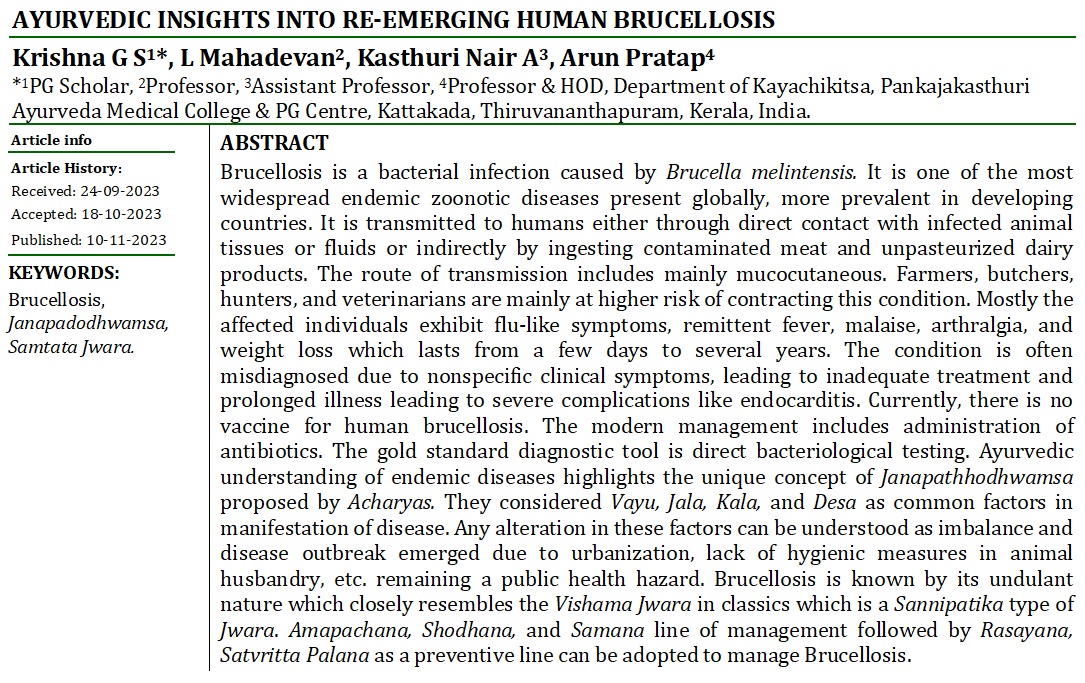Ayurvedic Insights into Re-Emerging Human Brucellosis
Abstract
Brucellosis is a bacterial infection caused by Brucella melintensis. It is one of the most widespread endemic zoonotic diseases present globally, more prevalent in developing countries. It is transmitted to humans either through direct contact with infected animal tissues or fluids or indirectly by ingesting contaminated meat and unpasteurized dairy products. The route of transmission includes mainly mucocutaneous. Farmers, butchers, hunters, and veterinarians are mainly at higher risk of contracting this condition. Mostly the affected individuals exhibit flu-like symptoms, remittent fever, malaise, arthralgia, and weight loss which lasts from a few days to several years. The condition is often misdiagnosed due to nonspecific clinical symptoms, leading to inadequate treatment and prolonged illness leading to severe complications like endocarditis. Currently, there is no vaccine for human brucellosis. The modern management includes administration of antibiotics. The gold standard diagnostic tool is direct bacteriological testing. Ayurvedic understanding of endemic diseases highlights the unique concept of Janapathhodhwamsa proposed by Acharyas. They considered Vayu, Jala, Kala, and Desa as common factors in manifestation of disease. Any alteration in these factors can be understood as imbalance and disease outbreak emerged due to urbanization, lack of hygienic measures in animal husbandry, etc. remaining a public health hazard. Brucellosis is known by its undulant nature which closely resembles the Vishama Jwara in classics which is a Sannipatika type of Jwara. Amapachana, Shodhana, and Samana line of management followed by Rasayana, Satvritta Palana as a preventive line can be adopted to manage Brucellosis.
Downloads

Copyright (c) 2024 International Journal of Ayurveda and Pharma Research

This work is licensed under a Creative Commons Attribution-NonCommercial-ShareAlike 4.0 International License.






